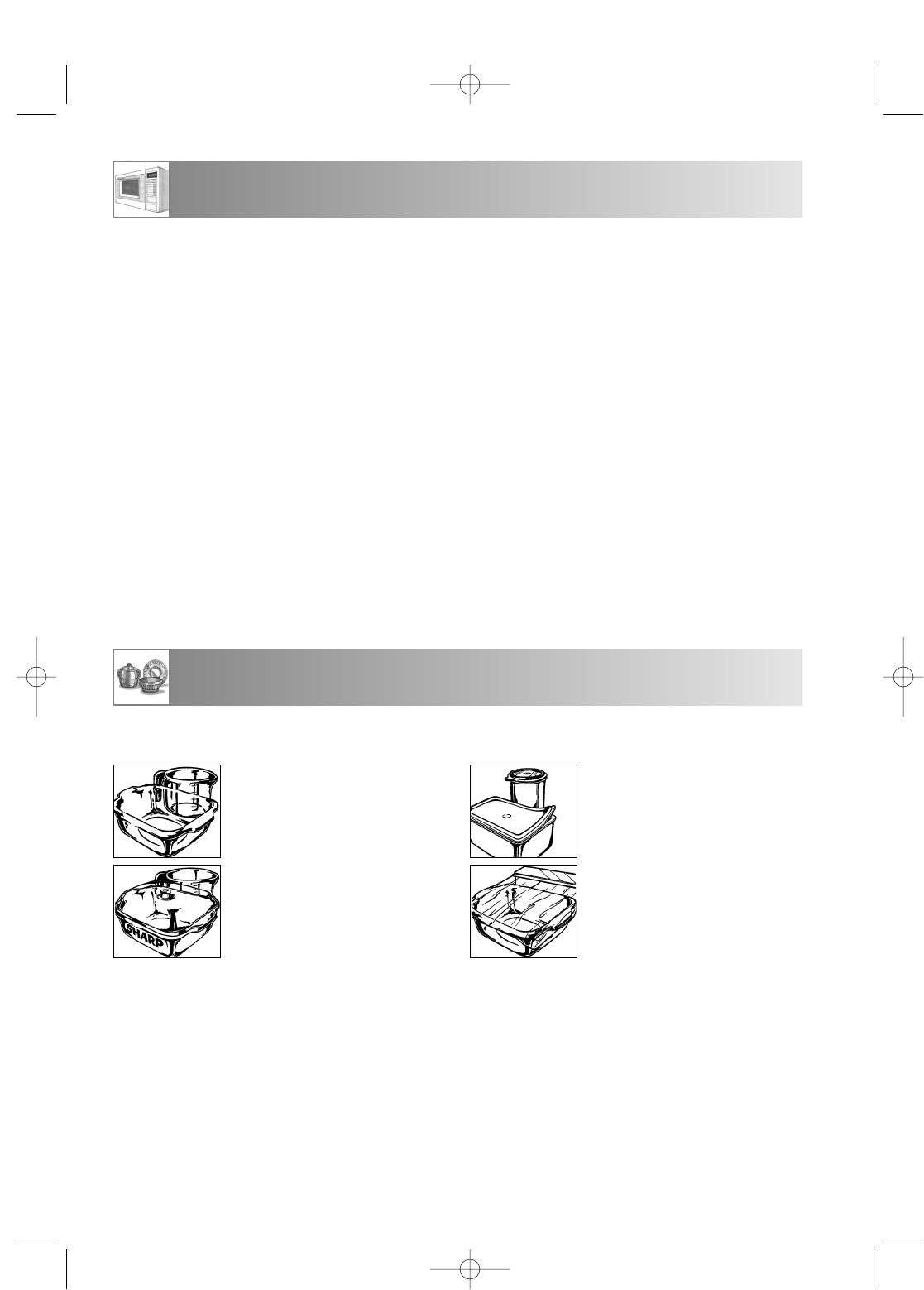
WHAT ARE MICROWAVES?
22
SUITABLE COOKWARE
GLASS AND CERAMIC GLASS
Heat-resistant glass utensils are
very suitable. The cooking
process can be observed from all
sides. They must not, however,
contain any metal (e.g. lead
crystal), nor have a metallic
overlay (e.g. gold edge, cobalt
blue finish).
CERAMICS
Generally very suitable.
Ceramics must be glazed, since with unglazed
ceramics moisture can get into the ceramic.
Moisture causes the material to heat up and may
make it shatter. If you are not certain whether your
utensil is suitable for the microwave, carry out the
utensil suitability test.
PORCELAIN
Very suitable. Ensure that the porcelain does not
have a gold or silver overlay and that it does not
contain any metal.
WHAT ARE MICROWAVES?
Like radio and television waves, microwaves are
electromagnetic waves.
Microwaves are produced by a magnetron inside
the microwave oven, and these vibrate the
molecules of water present in the food. The friction
this causes produces heat, which ensures that the
food is defrosted, heated, or cooked through.
The secret of the reduced cooking times is the fact
that the microwaves penetrate the food from every
direction. Energy is used to the full. In comparison,
the energy from a conventional hob passes from
the burner through the pan and so to the food. This
method wastes a great deal of energy.
THE CHARACTERISTICS OF
MICROWAVES.
Microwaves penetrate all non-metal objects made
of glass, china, earthenware, plastic, wood or
paper. This is why the microwaves never make
these materials hot. Dishes become hot only
because the food inside them is hot.
The food absorbs the microwaves and is heated.
Microwaves cannot pass through objects made of
metal and so they are deflected. For this reason
metal objects are not normally suitable for
microwave cookery. There are exceptions where
you can actually make use of the fact that the
microwaves cannot pass through metal. If you
cover food with aluminium foil at specific points
while it is defrosting or cooking, you can prevent
those parts from getting too warm, too hot, or
overcooked. Please check out the advice given in
the guide.
PLASTIC AND PAPER UTENSILS
Heat resistant plastic utensils which
are suitable for use in the
microwave can be used to thaw,
heat and cook food. Follow the
manufacturers recommendations.
Heat-resistant paper made for use
in a microwave oven is also
suitable. Follow the manufacturers
recommendations.
R-33STD English 10/12/2002 15:19 Page 22


















